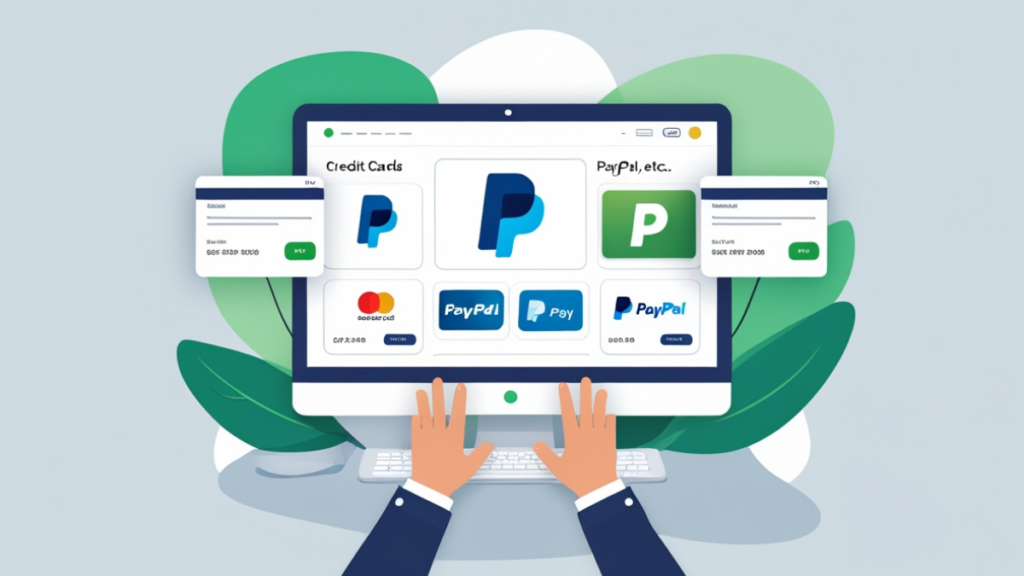Setting up payment gateways in Shopify is a crucial step for any e-commerce business looking to process transactions efficiently and securely. A payment gateway is an essential tool for receiving payments from customers, ensuring that the purchasing process is smooth and reliable. Whether you’re launching a new store or looking to optimize your current Shopify setup, this guide will walk you through how to set up payment gateways in Shopify step by step.
The process may seem intimidating at first, but with this detailed guide, you’ll be equipped with everything you need to make your Shopify store a seamless and secure place for customers to shop.
Table of Contents:
- What is a Payment Gateway?
- Why Do You Need a Payment Gateway on Shopify?
- Types of Payment Gateways for Shopify
- How to Set Up Payment Gateways in Shopify
- Step 1: Accessing Shopify Payment Settings
- Step 2: Choosing Your Payment Provider
- Step 3: Configuring Payment Methods
- Step 4: Testing the Payment Gateway
- Common Issues with Payment Gateways in Shopify
- Alternative Payment Methods for Shopify
- How to Manage Your Shopify Payments
- Conclusion
What is a Payment Gateway?
A payment gateway is a technology that securely authorizes credit card or direct payments for online businesses. When customers make purchases on your Shopify store, the payment gateway processes their payment by securely transmitting transaction data to banks and returning approval or rejection. Without a reliable payment gateway, you cannot accept payments online, making it an essential element of your e-commerce strategy.
Why Do You Need a Payment Gateway on Shopify?
Setting up payment gateways in Shopify is vital for processing payments securely. By integrating a payment gateway into your store, you provide your customers with a seamless, trustworthy, and efficient shopping experience. With the right payment system, your business gains access to multiple payment methods, allowing your customers to pay however they prefer. This flexibility enhances user satisfaction and can ultimately lead to more sales and increased customer loyalty.
Furthermore, Shopify integrates with many of the most trusted payment providers, offering various options for businesses of all sizes. These payment gateways can also provide fraud protection and reporting tools to help streamline your finances.
Types of Payment Gateways for Shopify
Before setting up a payment gateway on Shopify, it’s important to know the different types of payment gateways available:
- Shopify Payments: This is Shopify’s own payment processor. It’s easy to set up and comes with no transaction fees if you use it exclusively. Shopify Payments supports major credit cards and other local payment methods.
- Third-party Payment Gateways: Shopify also supports a wide range of third-party payment providers. These include PayPal, Stripe, Authorize.Net, and many others. Each payment provider has different processing fees and features.
- Manual Payment Methods: If you want to accept payments through direct bank transfers or cash on delivery, Shopify allows you to set up manual payment methods. However, manual methods may not offer the same level of customer trust as digital payment methods.
Understanding these types will help you decide which payment gateway fits your business needs. Each comes with its own set of advantages and fees, so choosing the right one is essential to running your online store efficiently.
How to Set Up Payment Gateways in Shopify
Setting up payment gateways in Shopify is a straightforward process. The following step-by-step guide will walk you through the setup, ensuring that you can start processing payments right away.
Step 1: Accessing Shopify Payment Settings
To start, you need to log into your Shopify admin panel. Once logged in:
- Go to the Settings menu at the bottom-left corner of the screen.
- Click on Payments.
- You will be redirected to the Payment Providers page where you can manage your payment methods.
In this section, you will see options for Shopify Payments as well as third-party payment providers. From here, you can choose to enable Shopify Payments or configure a third-party gateway.
Step 2: Choosing Your Payment Provider
If you decide to use Shopify Payments, follow these steps:
- In the Shopify Payments section, click Complete account setup.
- Fill in the necessary information, such as your business details, bank account information, and tax settings.
- Once completed, Shopify Payments will be enabled, and your store will accept payments through major credit cards.
For third-party payment gateways, scroll to the third-party providers section. Shopify offers integration with popular gateways like:
- PayPal: Allows customers to pay using their PayPal account or credit/debit cards.
- Stripe: A powerful gateway known for its flexibility and global reach.
- Authorize.Net: Another trusted payment solution that integrates with Shopify seamlessly.
You can choose the payment gateway that best suits your business model. Be sure to read through the terms and fees of each provider before making your decision.
Step 3: Configuring Payment Methods
After selecting a payment provider, configure the methods you want to accept. This could include:
- Credit cards (Visa, MasterCard, American Express, etc.)
- Digital wallets (PayPal, Apple Pay, Google Pay)
- Local payment methods (depending on your region)
For example, if you choose PayPal, you’ll be asked to link your PayPal account to your Shopify store. Similarly, for Stripe, you’ll need to connect your Stripe account.
Step 4: Testing the Payment Gateway
Once your payment gateway is set up, it’s important to run some tests to ensure everything works correctly. Shopify allows you to place a test order using a test mode for most payment providers. This ensures that payments can be processed without going live.
To test:
- Enable Test Mode in your payment provider’s settings.
- Place a test order using a credit card or another payment method.
- Confirm that the payment goes through and that the transaction appears in your Shopify admin.
Testing your payment gateway is essential to avoid any issues once you start receiving real payments.
Common Issues with Payment Gateways in Shopify
While Shopify offers excellent payment integration options, merchants sometimes encounter issues. Common issues include:
- Payment provider errors: These can occur if your payment gateway account is not properly configured.
- Transaction declines: Some transactions may be rejected due to fraud prevention measures or incorrect payment information.
- Currency mismatches: If your payment gateway does not support the local currency of your customers, transactions may fail.
If you encounter any issues, you can visit Shopify’s help center or reach out to customer support for assistance.
Alternative Payment Methods for Shopify
While setting up payment gateways in Shopify is essential, there are also alternative methods that can be used to expand your payment options:
- Bank Transfers: Shopify allows you to accept direct bank transfers or wire payments for customers who prefer not to use credit cards or digital wallets.
- Cash on Delivery (COD): This is an option for local customers who prefer to pay when they receive their products.
- Cryptocurrency: Shopify merchants can also accept payments in cryptocurrency through third-party apps like BitPay.
Offering multiple payment methods enhances customer convenience and could increase conversion rates.
How to Manage Your Shopify Payments
Once your payment gateway is set up, managing your Shopify payments is straightforward:
- Viewing Transactions: You can view all of your transactions under the “Orders” tab in Shopify’s admin panel.
- Refunds: If necessary, you can process refunds for customers directly from the orders page.
- Payments Dashboard: Shopify provides a detailed payments dashboard that shows sales reports, transaction fees, and payouts.
It’s important to stay on top of your payment settings to ensure that payments are processed correctly, and you are compliant with any regional or legal requirements.
Conclusion
Setting up payment gateways in Shopify is an essential step in building a successful online store. By choosing the right payment method for your business, you can provide customers with a seamless and secure checkout experience. Whether you’re using Shopify Payments, a third-party provider like PayPal or Stripe, or even alternative methods like bank transfers, having multiple payment options available is crucial to your business’s growth.
For a seamless e-commerce experience and the best streaming services, visit Codinov today for more information.


